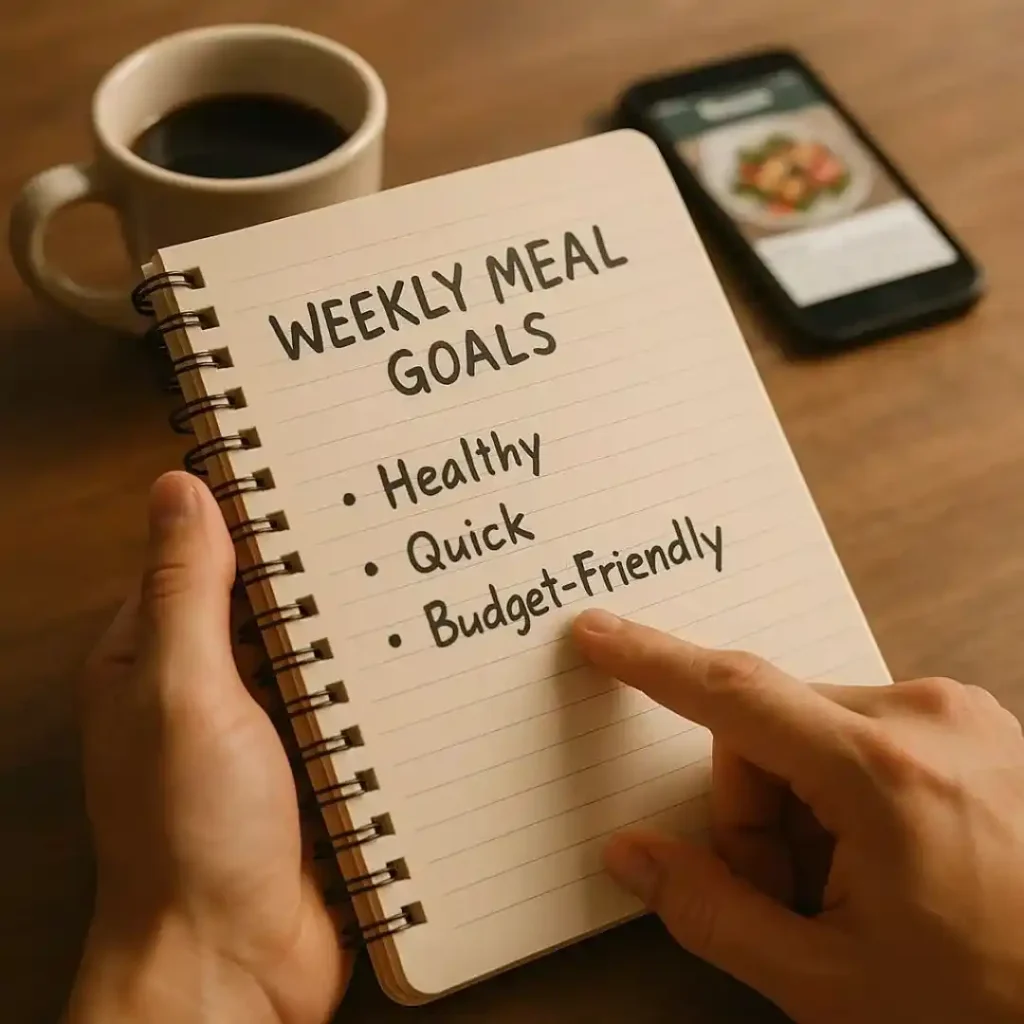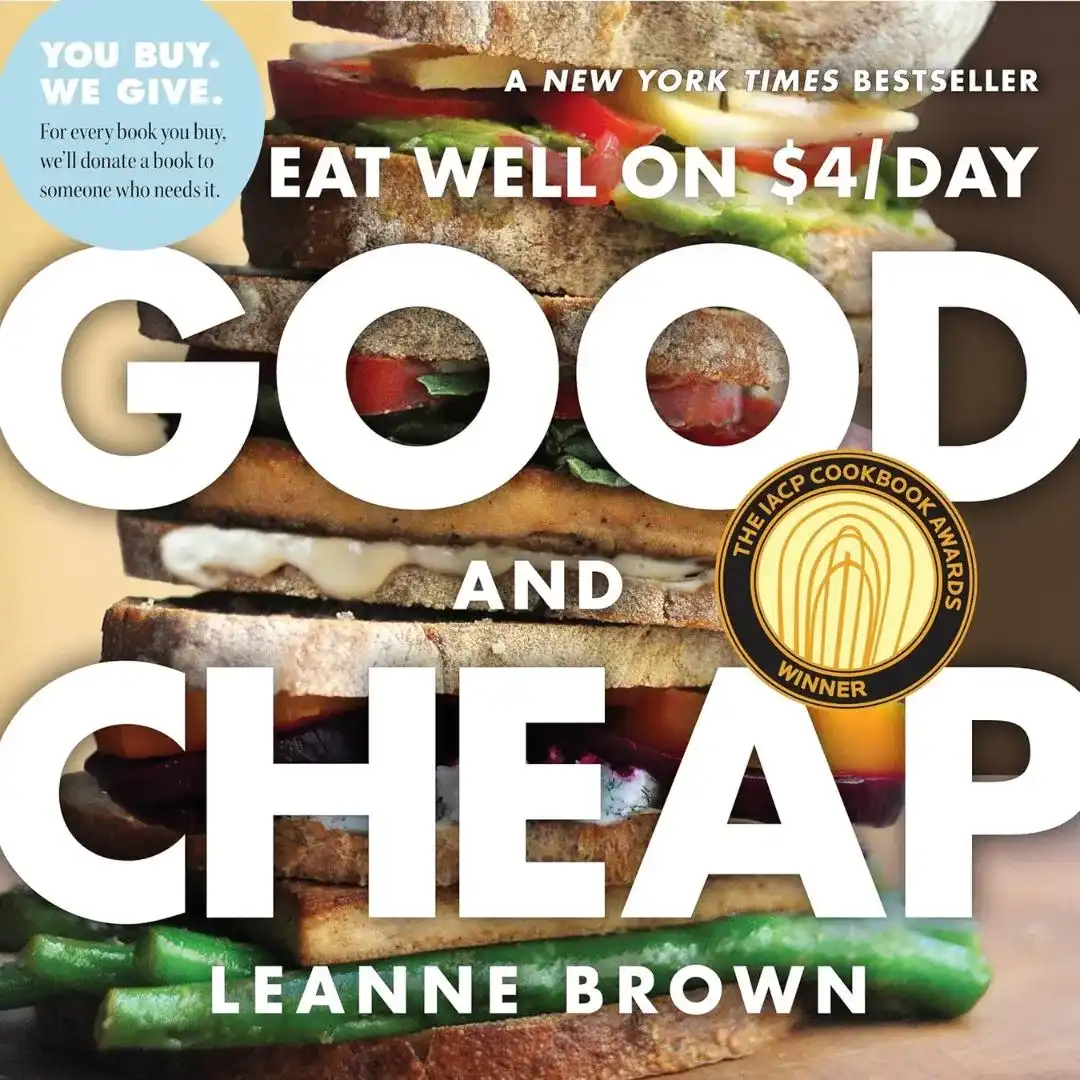
If you’ve ever stood in front of your fridge at 7 pm with no clue what to cook, you’re not alone. Meal planning can transform that chaos into confidence. How to Plan a Meal is more than just writing down recipes—it’s about saving time, eating healthier, and reducing stress in your daily routine.
- Why Meal Planning Matters for Beginners
- Step-by-Step Guide on How to Plan a Meal
- How to Plan a Meal on a Budget Without Sacrificing Health
- How to Plan a Meal with the Right Tools and Resources
- How to Plan a Meal Successfully by Avoiding These Pitfalls
- FAQs – How to Plan a Meal for Beginners
- Final Thoughts: Your Path to Stress-Free Mealtime
Why Meal Planning Matters for Beginners
Save Time and Reduce Stress
Instead of scrambling every evening, a weekly meal plan gives you a clear roadmap. By preparing in advance, you avoid last-minute takeout and stressful decisions. A simple schedule can cut cooking stress in half.
Improve Nutrition with Balanced Meals
Meal planning also makes it easier to include the right balance of macronutrients—protein, carbohydrates, and healthy fats. For example, pairing grilled chicken with quinoa and roasted vegetables ensures you’re fueling your body with complete nutrition. Registered dietitians often recommend meal planning as one of the most effective strategies for improving eating habits.
Cut Food Waste and Save Money
Did you know that families waste up to 30% of the food they buy each week? With meal planning, you shop with purpose. That means fewer forgotten vegetables at the back of the fridge and more money left in your pocket.
Step-by-Step Guide on How to Plan a Meal

So, how do you plan a meal effectively? Here’s a clear step-by-step process anyone can follow.
Choose Your Planning Method
Some people prefer a paper calendar, while others use apps like Google Calendar, Notion, or meal planning apps such as Paprika. Choose whichever tool feels easiest to stick with.
How to Plan a Meal with a Balanced Weekly Schedule
When planning, include a mix of proteins, vegetables, and whole grains. Here’s a simple weekly table example:
| Day | Breakfast | Lunch | Dinner |
|---|---|---|---|
| Monday | Overnight oats | Turkey sandwich & salad | Grilled chicken & veggies |
| Tuesday | Scrambled eggs & toast | Quinoa salad with chickpeas | Salmon with rice & broccoli |
| Wednesday | Smoothie bowl | Chicken wrap | Pasta with tomato & spinach |
| Thursday | Yogurt & fruit | Tuna salad | Stir-fry with brown rice |
| Friday | Avocado toast | Lentil soup | Homemade pizza with veggies |
| Saturday | Pancakes | Grilled cheese & soup | Tacos with beans & chicken |
| Sunday | Omelet | Buddha bowl | Roast chicken & potatoes |
Write a Smart Grocery Shopping List
Organize your list by categories—produce, proteins, pantry staples—so shopping becomes faster and more efficient. For example:
- Proteins: chicken breast, salmon, lentils
- Vegetables: spinach, broccoli, carrots
- Pantry: rice, oats, olive oil
How to Plan a Meal on a Budget Without Sacrificing Health
Meal planning doesn’t have to be expensive or complicated.
Affordable Grocery Hacks
Buy seasonal produce, shop store brands, and use frozen vegetables—they’re just as nutritious and often cheaper. Bulk buying grains like rice or oats also saves money.
Portion Control and Nutrition Balance
Planning ahead allows you to portion meals properly. Preparing lunch boxes with lean protein, whole grains, and vegetables ensures your meals are balanced and satisfying.
Quick and Time-Saving Recipes
Keep a collection of go-to meals that can be prepared in under 30 minutes. For example:
- One-pan salmon and vegetables
- Chicken stir-fry with brown rice
- Overnight oats with fruit
- Sheet-pan fajitas
- Lentil soup with bread
How to Plan a Meal with the Right Tools and Resources
Having the right tools makes meal planning much easier and far less overwhelming. Think of them as your support system in the kitchen and beyond—they save time, reduce waste, and make sticking to a weekly meal plan more realistic.
Must-Have Kitchen Tools
You don’t need a high-tech kitchen to start meal planning. A few reliable essentials go a long way:
- Storage containers: Invest in glass containers with airtight lids. They’re perfect for portioning meals, keep food fresher longer, and are microwave- and oven-safe for easy reheating.
- Measuring cups and spoons: These ensure accuracy when following recipes and help with portion control.
- A sturdy cutting board and sharp knives: Chopping vegetables, prepping proteins, and slicing fruit is much faster with the right tools.
- Sheet pans and one-pot cookware: Great for batch cooking simple, nutritious meals.
Real-life example: If you prepare a big tray of roasted vegetables on Sunday, you can repurpose them throughout the week—add them to salads, wraps, or rice bowls without extra prep time.
Apps and Digital Planners
Technology makes learning how to plan a meal much easier. Whether you prefer a phone app or a digital calendar, these tools help you stay organized and consistent.
- Google Calendar or Notion: Perfect for mapping out your weekly meal schedule alongside work and family commitments.
- MyFitnessPal or Cronometer: Track calories, macronutrients, and progress toward health goals.
- Paprika or Mealime: Store recipes, create grocery lists, and schedule meals with one click.
These apps also sync across devices, so you can update your shopping list on your phone while at the supermarket.
Recipe Books and Online Resources
Even the best meal plans fail without inspiration. Beginner-friendly cookbooks, recipe blogs, or Pinterest boards can give you ideas without leaving you stuck in a cooking rut.
- Cookbooks for beginners: Titles like “The Complete Cooking for Two” or “Good and Cheap” are excellent for those just starting.
- Food blogs and websites: Trusted resources such as CookerDiary, Serious Eats, EatingWell, or BBC Good Food provide reliable recipes with nutritional info.
- Pinterest and YouTube: Visual learners can benefit from step-by-step tutorials and meal prep videos.
Tip: Stick with one or two trusted resources at first. Jumping between too many recipes can lead to overwhelm and wasted groceries.

Good and Cheap proves that cooking skill—not money—is the secret to eating well. Designed for those living on just $4 a day, this cookbook offers 100+ flavorful, budget-friendly recipes like Spicy Pulled Pork, Barley Risotto, and Vegetable Jambalaya. It covers everything from breakfasts to desserts while teaching smart shopping, efficient cooking methods, and how to get the most from simple ingredients.
How to Plan a Meal Successfully by Avoiding These Pitfalls
Even beginners can avoid the most common mistakes when learning how to plan a meal. While meal planning is simple in theory, many people make it harder than it needs to be. By recognizing these pitfalls early, you’ll create a plan that’s realistic, sustainable, and enjoyable.
Overcomplicating Your Plan
One of the biggest mistakes beginners make is trying to plan too many different meals at once. Cooking 21 unique meals every week is not only overwhelming but also leads to grocery lists that are long, expensive, and hard to manage. Instead, choose three or four versatile recipes and rotate them throughout the week.
For example:
- Cook a large batch of chili and enjoy it for dinner one night, then use it as a filling for baked potatoes the next.
- Make grilled chicken that works in salads, wraps, and pasta dishes.
This approach keeps meal planning manageable while still giving you variety.
Ignoring Leftovers
Another common mistake in how to plan a meal is failing to account for leftovers. Many beginners forget that most recipes yield more than one serving. Leftovers are your best friend because they save time, reduce food waste, and cut down on midweek cooking stress.
Practical tip:
- Roast a whole chicken on Sunday, and then repurpose it during the week into chicken tacos, a hearty soup, or a protein-packed salad.
- Double your rice or quinoa batch and use it as the base for stir-fries or grain bowls.
By planning intentional leftover nights, you’ll simplify your routine and stretch your grocery budget further.
Forgetting Flexibility
When figuring out how to plan a meal, flexibility is key. Life doesn’t always go according to schedule—sometimes you’ll work late, have social plans, or just crave pizza instead of the meal you planned. Many beginners burn out because they don’t leave room for spontaneity.
Build flexibility into your plan by:
- Leaving one night open for takeout, dining out, or a family favorite.
- Keeping easy backup meals (like pasta and jarred sauce or frozen veggies) for nights when you don’t feel like cooking.
- Allowing for substitutions if certain ingredients aren’t available at the store.
By embracing flexibility, your meal plan becomes something you look forward to, rather than a rigid system that feels restrictive.
FAQs – How to Plan a Meal for Beginners
How to start meal planning for beginners?
Start small. Plan just 3-4 dinners for the week. Write down the meals, create a shopping list based on the recipes, and stick to it. Choose simple recipes you know and consider leftovers for lunch. This reduces stress, saves money, and prevents last-minute unhealthy takeout.
What is the 3 3 3 rule eating?
The 3-3-3 rule is a simple structure for balanced meals. It means including 3 food groups (e.g., protein, carb, vegetable), eating roughly every 3 hours to maintain energy, and aiming for around 3 servings from each major food group throughout the day. This framework promotes variety, stable blood sugar, and prevents overeating.
What are the 5 rules in planning meals?
Balance: Include multiple food groups (protein, carbs, fat, veggies).
Variety: Rotate different foods to get a wide range of nutrients.
Adequacy: Ensure meals meet your energy and nutritional needs.
Moderation: Control portion sizes, especially for fats and sugars.
Practicality: Consider your budget, schedule, and cooking skills to create a sustainable plan.
What is the 5 4 3 2 1 eating plan?
The 5-4-3-2-1 method is a simple daily intake guideline:
5 servings of vegetables and fruits
4 servings of water (aim for 8+ total)
3 servings of lean protein
2 servings of whole grains
1 hour of physical activity
1 fun treat or “extra”
It’s a memorable, balanced framework for overall health.
Final Thoughts: Your Path to Stress-Free Mealtime
Meal planning may feel overwhelming at first, but starting small makes it manageable. Begin by planning three dinners this week. With time, you’ll save money, eat healthier, and stress less about food. Planning meals isn’t just a kitchen skill—it’s a lifestyle habit that gives you control and peace of mind.
This article is for educational purposes only and should not replace advice from a licensed dietitian or healthcare professional. Some links in this post may be affiliate links, meaning I may earn a small commission at no extra cost to you.




